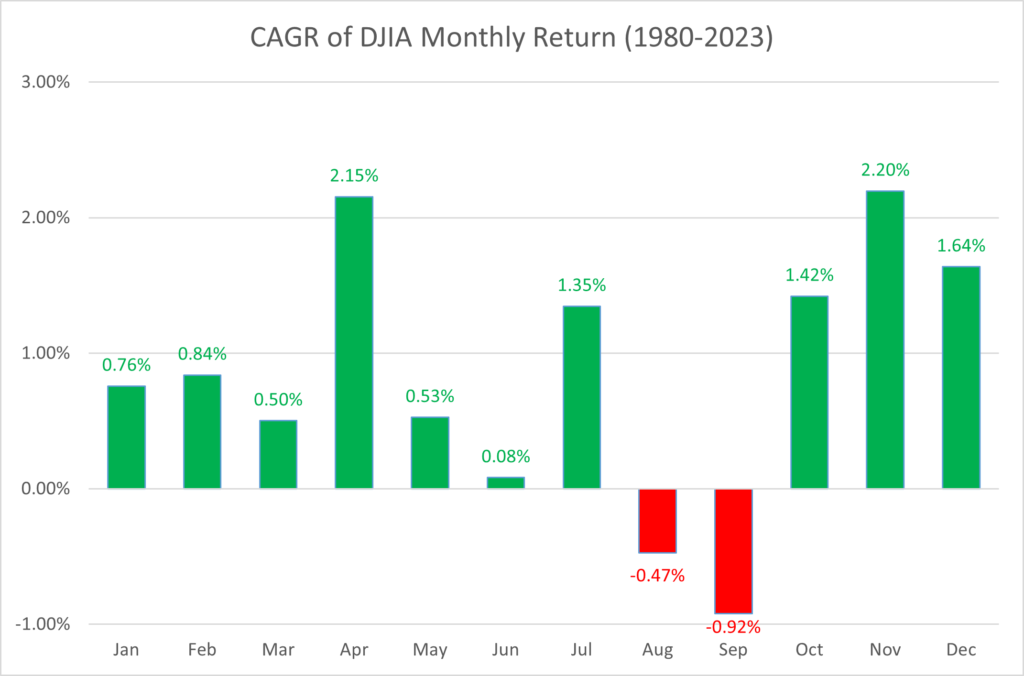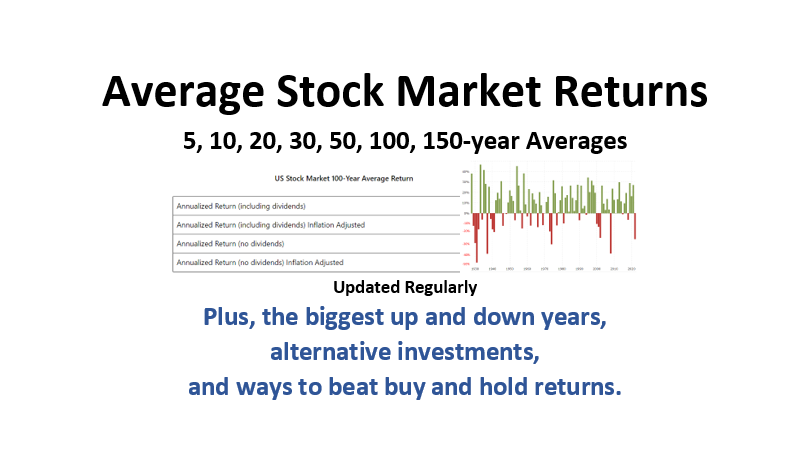Stock market returns tend to vary dramatically from year to year. But when looking at stock market performance smoothed out over many years or decades at a time — or the average stock market return — a clearer trend starts to emerge.
What Is the Average Stock Market Return?
The S&P 500 has returned more than 10% per year on average. This is true for that benchmark index of U.S. stocks over both the past 10 years and over the past several decades.
The average stock market return, as measured by the S&P 500 index, is about 11% over the last 10 years, according to S&P Dow Jones Indices.
That is based on price return, which measures the capital gain or loss, or price change, of the index members. By comparison, total return measures not only returns from price change, but also returns earned from cash dividends and their reinvestment. Based on total return, the average stock market return is about 13% over the past 10 years.
Since 1965, the S&P 500 has provided annualized total returns of 10.2% through 2023, according to data compiled by Berkshire Hathaway (BRKB).
Over those 60 years, the S&P 500 rose in individual years by as much as 37.6% (in 1995) — and fell by as much as 37% as well (in 2008).
No individual stock goes up forever either, but the lesson here is that the stock market tends to move higher over time. Investing in well-chosen stocks can help you grow your money. Your investment may lose money over time, too, but common sense, discipline, and the ability to ride out the market’s ups and downs can reduce the risk of losses.
Your actual returns may be slightly less than the stock market return in any given year, after accounting for inflation and investment fees, and whether you reinvest dividends.

What Is the S&P 500 Outlook In 2025?
Some forecasts see the S&P 500 keeping up with historical averages this year. Analysts at Goldman Sachs Research project that the U.S. benchmark index will deliver a 10% total return including dividends in 2025, “its third straight year of gains amid solid economic expansion and steady earnings growth.”
The S&P 500 gained 25% in 2024, after jumping 26.3% in 2023 in terms of total return, including reinvested dividends.
Those impressive stock market performances have been powered in part by the artificial intelligence frenzy. Both 2023 and 2024 included several notable pullbacks. But investors shrugged off worries about macroeconomic uncertainty and two major global wars — with stocks powering higher after an 18.1% tumble for the S&P 500 in 2022.
Lo & Sons Original Catalina Deluxe Premium Canvas Duffel Bag – Travel, Gym, Hospital, or Weekender Bag with Shoe Compartment for Men and Women
Best-Performing Stocks of Past 10 Years
Here are some of the best-performing stocks of the last 10 years in terms of their annualized total return, which is shown in parenthesis. This period included two major drawdowns and recoveries tied to the Covid-19 pandemic and a spike in inflation:
- Nvidia (NVDA) (up almost 76%)
- Celsius Holdings (CELH) (66%)
- Applied Digital (APLD) (59%)
- eXp World Holdings (EXPI) (54%)
- Zynex (ZYXI) (up 51%)
- AMD (AMD) (46%)
- Quantum Computing (QUBT) (44%)
- Texas-Pacific Land (TPL) (43%)
- IES Holdings (IESC) (41%)
- Tesla (TSLA) (40%)
Several of these outperformers are midcap or small-cap stocks, which can be little engines of stock market growth. However, U.S. large-cap stocks, collectively, have outpaced their midcap and small-cap peers in recent years.
The average stock market return for midcap stocks, as tracked by the S&P MidCap 400 index, is almost 10% over the past 10 years, on the basis of annualized total returns. It is around 9% for small-cap stocks, as tracked by the S&P SmallCap 600 index.
Read more: Amazon’s $7,999 Fireproof ‘Granny Flat’ Tiny Home: A Game-Changer in Affordable Living
That compares with the 13% annualized total return over 10 years for the S&P 500, which tracks the largest companies and covers roughly 80% of the U.S. market capitalization. Broadly speaking, stock market returns lagged in foreign markets over this same period.
Investors should bear in mind that outperformance isn’t the smartest measure by which to choose stocks. Consider IBD’s time-tested rules for investing in stocks instead.
But past performance can be illuminating, as in the case of Nvidia stock. Quantum Computing stock also offers an important lesson: Nearly all of its 10-year outperformance came in just the final quarter of 2024, when it soared from less than a buck per share to nearly $17.
Stock Market Performance After Elections
The first year of President-elect Donald Trump’s second term in the White House holds promise for the stock market.
“Since 2005, the best year for market returns has been the first year of a presidential term and by an enormous margin,” Strategas CEO Jason Trennert wrote in December.
“It is more difficult to use historical analogs today than it was in the past given the ease with which politicians from both sides of the political aisle spend taxpayers’ money,” Trennert cautioned. Still, he noted that Trump has vowed to root out excess government spending. The incoming U.S. president’s promises of tax cuts and deregulation could also fuel stocks, but his stance on tariffs and trade is a worry.
Looking at actual election years, the stock market has gained in 21 out of 25 years (84%) in which U.S. presidential elections were held since 1928.
Why Invest In Stocks?
Owning stocks in different companies offers the potential for rewards that can more than offset the risks of losing money. Investing in stocks can help you grow your savings; protect your money from inflation; and maximize income from your investments.
The stock market, it has been said, rewards patience and punishes greed. Taking the long view can help you enjoy compounding growth in stock market returns — and that has been stellar over time.
Just $100 invested in U.S. stocks in 1928 would be worth almost $800,000 at the end of 2023, according to data compiled by NYU Stern School of Business Professor Aswath Damodaran. That same $100 would be worth around $7,000-$10,000 if invested in bets perceived as safer, such as Treasurys and gold.
400-Year-Old Cache Of Treasure Found Hidden Inside The Leg Of A Statue In A German Church








